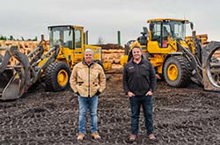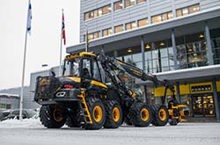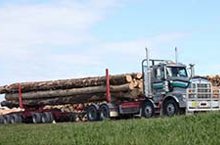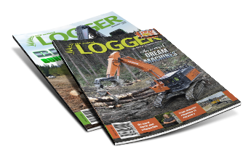
Is the standard, off-the-shelf control system in your forestry machinery a weak link in your safety chain? In an industry where operators navigate treacherous terrain and extreme weather, the one-size-fits-all approach to equipment control is no longer just inefficient - it’s a liability, says Justin Mahendra, Director of Sales and Product Management for Bailey International, manufacturer of custom hydraulic and electronic solutions. True operational safety doesn’t come from a generic solution. It's built through intelligent, customised design that places the operator at the centre of the machine, he adds.
We know that forestry operations are inherently risky. Operators face long hours, which leads to fatigue, while battling harsh environmental conditions and managing powerful hydraulic machinery. These factors create a perfect storm for human error, reduced productivity, and, most critically, serious accidents.
“Simply accepting these risks as ‘part of the job’ is a failure of imagination and engineering. We must demand more from the tools that are fundamental to the industry’s success,” Mr Mahendra says.
The key to elevating safety and efficiency lies in addressing the specific, daily challenges operators face. This requires moving beyond standard components and embracing control solutions engineered for the unique demands of forestry. This includes:
- Combating operator fatigue: Long shifts lead to physical and mental exhaustion, diminishing an operator's focus and precision. Ergonomically designed controls, like custom joysticks and handles, are tailored to the operator's natural movements. This focus on comfort significantly reduces strain, allowing operators to maintain concentration and control for longer periods, directly translating to fewer errors and safer operations.
- Defying extreme environments: Forestry work doesn’t stop for rain, snow or dust. Standard electronic controls often fail when exposed to these elements, causing unexpected downtime and creating hazardous situations. Robust, weather-resistant solutions are essential. For example, control handles with an IP67 rating are sealed against dust and water ingress, ensuring reliable performance when it matters most, and minimising costly interruptions.
- Minimising human error with automation: In complex tasks, even the most experienced operator can make a mistake. Integrating automation into control systems is a game changer. By automating repetitive or high-risk functions, we allow operators to focus on critical, decision-making tasks. This shift doesn’t replace the operator, but empowers them, significantly reducing the likelihood of accidents caused by momentary lapses in attention.
- Enhancing reliability and reducing downtime: When a machine goes down in a remote location, the costs multiply quickly. The durability of every component is critical. High quality, reliable control components, proven to withstand millions of cycles without failure, extend the life of machinery and drastically cut maintenance expenses and operational downtime.
“These specialized control systems are driving the evolution of forestry equipment. The technology to build safer, more efficient machinery exists today. It’s no longer a question of whether we can improve safety, but how we choose to implement these advancements.
“By focusing on industry-customised controls, equipment manufacturers can deliver a superior product that performs better and actively protects its operator. This is the new benchmark for excellence. It’s about creating a symbiotic relationship between operator and machine, where the equipment is an extension of the operator’s intent, not an obstacle.
“The path to a safer and more productive forestry industry is clear. It requires a commitment to engineering solutions that are as resilient and adaptable as the professionals who use them,” he says.










